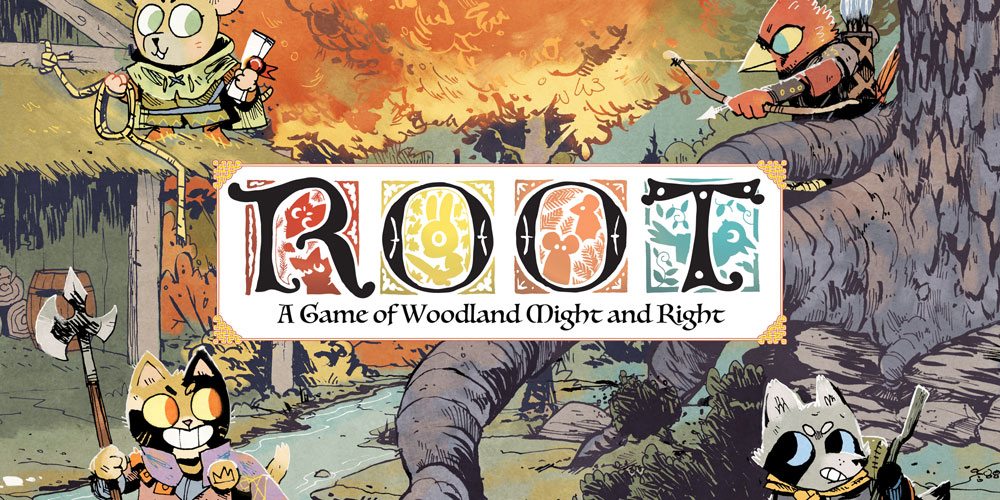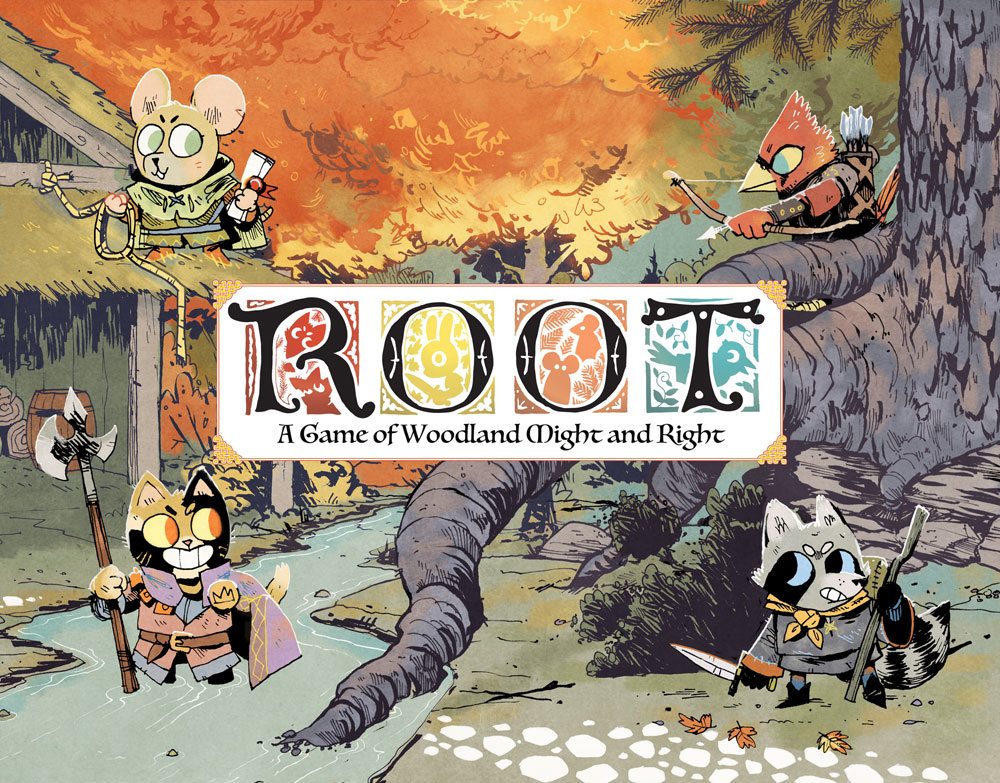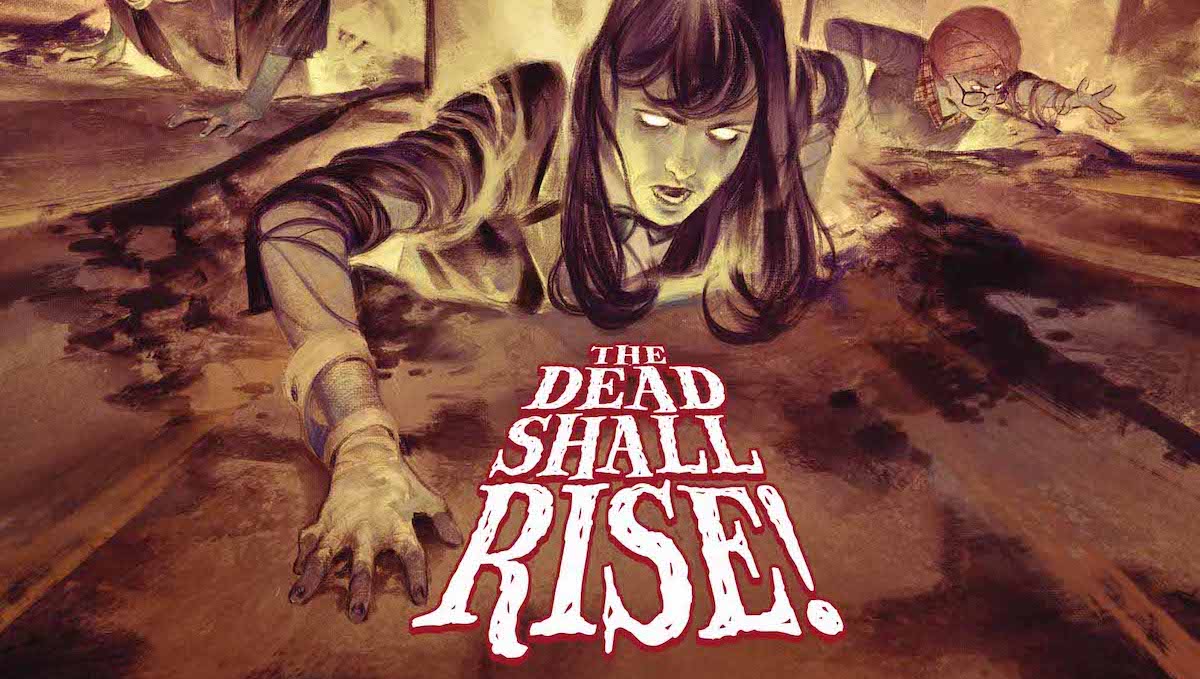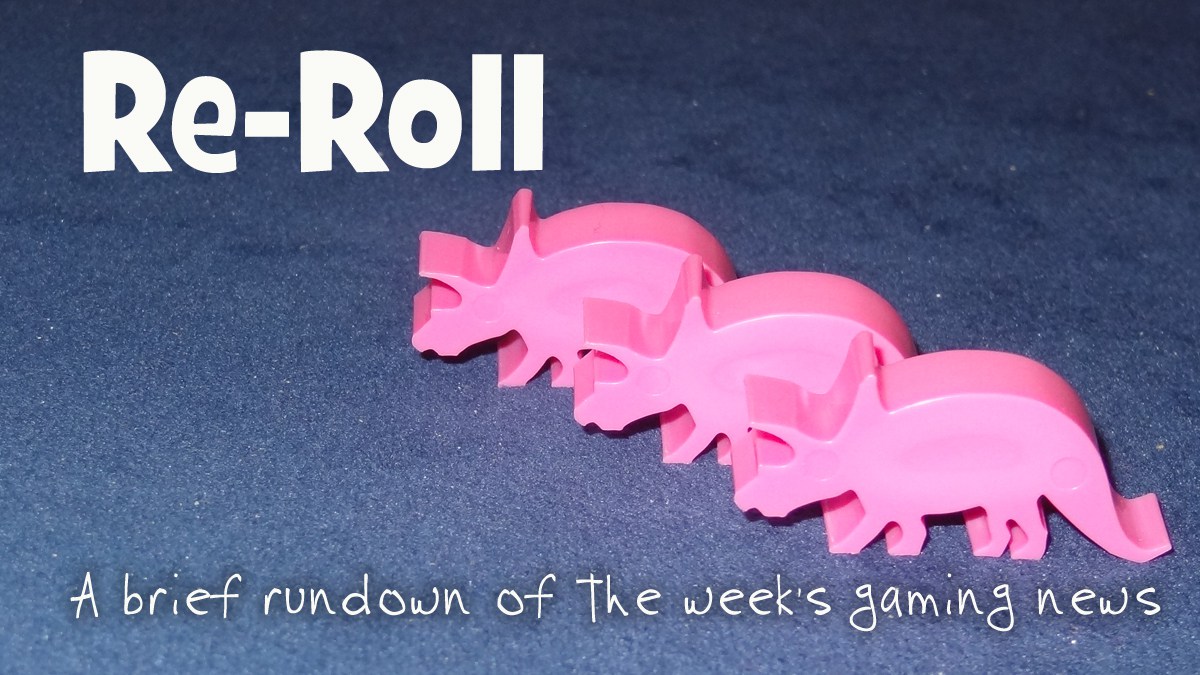Who rules the woods? Various factions are struggling for control, each using their own strategies and techniques, but only one will get to write the history books.
What Is Root?
Root is an asymmetric war and adventure game for 2 to 4 players (or 1 to 6 with the expansion), ages 10 and up, and takes about 60–90 minutes to play. It’s currently seeking funding on Kickstarter, with a pledge level of $60 for a copy of the game, which includes the expansion. Despite the artwork, I think the game is more complex than most games rated for “10 and up,” so be aware that it would probably be best for an experienced 10 and up.
There’s less than a week left to go in the campaign, which has already shot well past its original funding goal and has reached many of its stretch goals.
New to Kickstarter? Check out our crowdfunding primer, and visit our Kickstarter curated page for more projects we love.
Root Components
Note: I was able to play an early prototype, but the game was still in development and so my photos do not reflect final component quality and may also include details that have been changed. I’ve included an image from the Kickstarter page instead of my outdated components photo, but keep in mind that there may be additional changes as the campaign wraps up.
As of this writing, the core box will include:
- Double-sided game board
- 4 faction boards
- 60 cards
- 80 warrior meeples
- 80 counters
- 2 custom 12-sided dice
The Riverfolk expansion (included with the Kickstarter) will include:
- 3 additional Vagabond characters
- Riverfolk faction
- 5 custom card holders
- Cooperative scenarios and solo rules
The artwork in the game is by Kyle Ferrin, who also illustrated Vast: The Crystal Caverns. It’s fantastic—the illustrations of the various woodland creatures look like they belong in a kids’ book, and you’ll get plenty of illustrations on all of the cards. The board itself is a gorgeous illustration in itself, featuring a forest with paths connecting small clearings.
The meeples are pretty great—they’re custom shaped meeples with screen-printed faces. (My prototype just had colored cubes.) I’m looking forward to seeing how these turn out in the finished product. There have been (as usual on Kickstarter) requests for plastic miniatures, but I don’t know that they’d really fit in this game. For one, you have a lot of warriors that may need to fit into a small space, and I think the cute meeples match the style of the game better.

How to Play Root
Normally in this section I would give a fairly detailed description of how to play the game, but in this case the game was still in development. I was able to play twice, using two iterations of the rules and components, so I got a general feel for the game, but I know that a lot of specifics have changed since I played and I wasn’t able to keep making additional print-and-play versions with every change.
You can download a draft copy of the rulebook here.
The Goal
The goal of the game is to be the first to score 40 points. However, there are also special victory conditions in the form of quest cards mixed into the deck—you can reveal a quest card to indicate that you’re trying for its special victory condition and you’ll get some benefits from the card, but then you can only win by completing that quest.
Setup
The setup rules may have changed from my prototype set, but basically there’s a large board that shows various clearings in a forest connected by paths. Each of the clearings is marked with one of the woodland creatures—fox, rabbit, mouse—and has a number of building spaces on it. The Marquise de Cat starts in one area and has a warrior in every clearing, along with a few starting buildings. The Eyrie starts with a roost in a clearing, and a few warriors at that roost. The Woodland Alliance has a hideout somewhere in a clearing, and the Vagabond is just off in the forest.
Each player’s board is different. The Cat’s board shows rows for the three different buildings it can build, and building them will uncover various bonuses like points, larger hand size, and so on. The Vagabond’s board tracks the Vagabond’s relationship with each of the other factions, starting at neutral but potentially becoming friendly or unfriendly.

Gameplay
Again, it’s hard to go into the specifics but I can give a general idea. Root is asymmetric, which means that each player has very different abilities and gameplay. Unlike Vast, however, there are some more similarities between the factions, with some shared mechanics.
For instance, ruling a clearing means that you have the most pieces there (warriors and buildings). The Eyrie win ties, but otherwise a tie means nobody rules it. Most of the characters move the same way: one point of movement can move any number of warriors from one clearing to an adjacent clearing along a path, but control of the territory matters. You can always move from a clearing you rule. If you don’t rule your origin clearing, you must get permission from the destination’s ruler, if any. The Vagabond has an exception, since it can also move into forest spaces and doesn’t always have to get permission.
Battles are resolved with the two dice, which show values of 0, 1, 2, and 3. The two dice are rolled—the defender takes the higher number as damage, and the attacker takes the lower number as damage. There are some options to retreat before the dice are rolled, and Ambush cards may affect the outcome, but generally that’s how it goes no matter who is fighting.
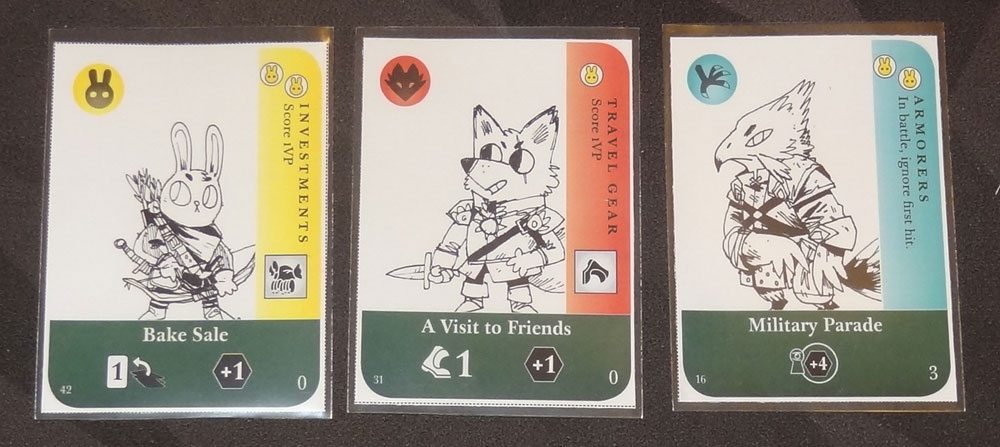
The cards are used for multiple purposes, and all four factions may end up with cards from the shared deck. First, each card has a suit—fox, bunny, mouse, bird. Quite often, when you play a card, the suit must match the clearing where you’re using it. (Birds are wild.) One side of the card is an item that can be crafted if you have the right abilities, awarding you points or special effects, and sometimes creating an item that the Vagabond can claim from you. The bottom of the card shows a “conspiracy,” which is for the Woodland Alliance.
Marquise de Cat
The Cat is the current reigning power, having taken over from the Eyrie Dynasties during a momentary lapse. The Cat gets points by building—sawmills to generate wood, workshops to craft items, and recruiters to increase its army. The Cat’s warriors have the ability to transport wood around the board quickly.

The Eyrie Dynasties
The Eyrie Dynasties are the birds, and the former rulers of the forest. They are working to reclaim power from the Cat, and still have a lot of influence over the woodland creatures. The Eyrie score points based on the number of roosts they have at the end of their turn. The Eyrie has four different leaders that can come into play—each leader card shows what the four suits will let you do: maneuver (move/attack), intelligence (send Eyrie warriors to the Woodland Alliance board), and build roosts.
The Eyrie is also subject to turmoil—if you don’t have enough warriors or you can’t place a new roost, the Eyrie gets upset and overthrows their leader, picking a new one, and there are other penalties when that happens.
The Woodland Alliance
The Woodland Alliance is made up of the creatures that just live in the forest—they have strength in numbers. They get points by revealing conspiracies. The Woodland Alliance builds up supporters in the three nations—fox, bunny, mouse—and then spends them to build hideouts, reveal conspiracies, battle, and so on. One interesting thing is that when the Eyrie places warriors onto the Woodland Alliance board, they generally must be spent first, which then also helps the Eyrie get its own warriors onto the board while accomplishing the Woodland Alliance’s agenda.
Vagabond
Finally, there’s the Vagabond, the one who has no abiding loyalty and just wants to play everyone against each other so he comes out ahead. The Vagabond is alone and doesn’t have a lot of warriors—but he can slip through the forests instead of just traveling on the paths. As other factions craft items for points, the Vagabond is able to take those items to level up.
The Vagabond also has an interesting alignment track, which shows the Vagabond’s relationship with each of the factions. You can give other players cards to buy items from them and improve your relationship, or you can steal cards from other players and become hostile toward each other. There are different effects for being allies or hostile, of course.
Game End
The game ends when somebody reaches 40 points or more—if more than one player reaches or passes 40 points at the same time, the higher score wins. Or, the game ends when somebody manages to fulfill a quest card.
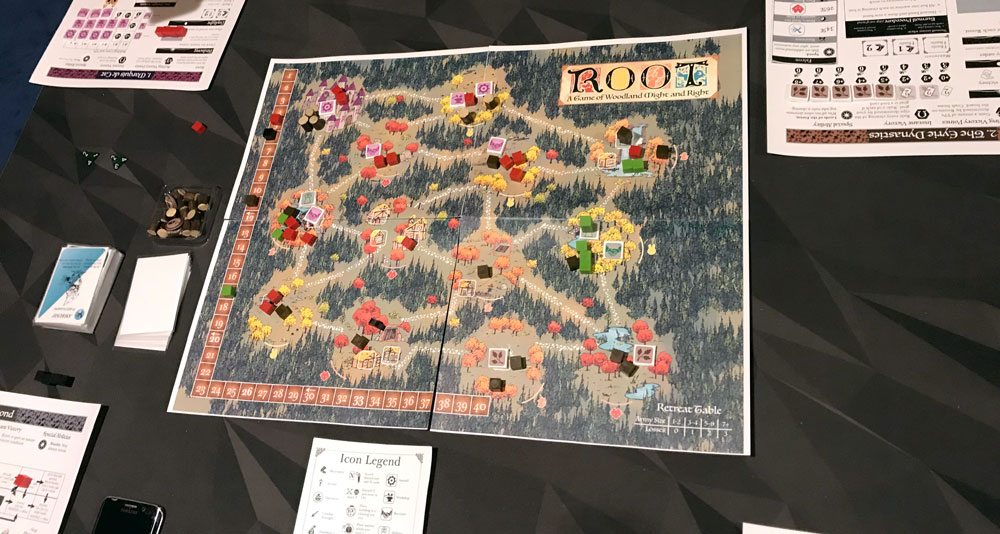
Why You Should Back Root
Root was designed by Cole Wehrle, who has a particular academic interest in empires. His previous games have had some pretty heavy themes; I haven’t played any of them myself, but my friends who have speak very highly of them (and also have emphasized that they’re complex games). Reading through some of his Designer Diary posts on BoardGameGeek, I was fascinated because even though this looks like a game about cute woodland animals on the surface, Wehrle clearly has put a lot of thought about statecraft and empire-building and what happens to the people who just live there.
Root is published by Leder Games, which also published Vast, one of my favorite games. It brought a whole new meaning to the term “asymmetric game” for me. Before, I often understood the term to mean a game in which players have different powers: Cosmic Encounters, for instance. Everyone plays by the same basic set of rules, but has different abilities, kind of like the way that everyone uses the joystick and the same buttons in Street Fighter but you have different combinations, speeds, and special moves. Vast was asymmetric in the sense that everyone had a different set of rules: like if one person was playing Street Fighter with a joystick and the other person had a steering wheel and foot pedals. Root falls somewhere in between—the differences between the factions are more than just special abilities, but there are more common rules than in Vast also.
And I’ve already mentioned Kyle Ferrin, who also did the artwork for Vast. With the team working on this game, I expect that it’s going to be an engaging and thoughtful experience, and that it will look awesome. I love the tiny snippets of story that I’ve read about the factions, and it’s easy to draw parallels to real historical (or current) events.
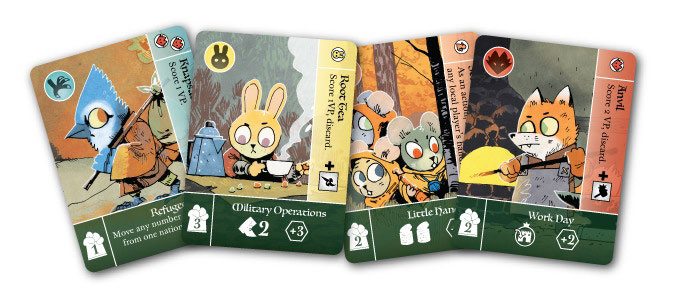
Backing the Kickstarter now also gets you the expansion included in the $60 pledge. Aside from the cooperative and solo rules, the expansion also adds at least four new Vagabond characters (and possibly more)—each Vagabond will have its own play style and abilities, and I’m very curious to see what those will be. My understanding is that in every game, you need at least the two core factions—the Marquise de Cat and the Eyrie Dynasties—and then up to four “opportunists,” which can include two vagabonds, the Woodland Alliance, and the Riverfolk. The bots can control any of the core factions in case none of you want to be the Cat or the Eyrie. Like Vast, it looks like it will be extremely flexible in how you mix and match factions every time you play.
I do have to say that the Kickstarter launch seemed a little rushed to me—the rules and components have undergone a lot of changes even after the first prototype was sent. It’s not that it’s unusual for a game to change a lot during its development, but that the campaign was launched during development rather than after it was mostly completed. That said, I’ve also seen the way Patrick Leder develops and tests games, and I’m pretty confident that what arrives on your doorstep next fall will be polished and balanced.
The other warning I’ll give is that it is still a fairly complex game. I know that for Cole Wehrle, this is one he’s considering a more “accessible” game, compared to his other designs, and I do think that the shared rules make it perhaps easier to teach than Vast, in which you basically had to learn up to five separate games before you could start. But it’s a step up from many games rated “10 and up,” so although I’m very enthusiastic and excited about Root, I would caution thinking about it as a kids’ game that you can just give to some 10-year-olds to learn on their own.
All in all, I’m very excited for Root because of its pedigree and because I enjoyed playing even the imperfect prototype versions that I tried. I do wish I could have played something closer to the finished rules before the Kickstarter launched in order to give you a more informed opinion, but I think this is one worth taking a chance on, particularly if you also enjoyed Vast. If Vast just didn’t really grab you, you may want to wait and see how Root turns out before making a decision.
For more information or to make a pledge, visit the Root Kickstarter page!
Click here to see all our tabletop game reviews.
If you’d like to stay up-to-date with all of our tabletop gaming coverage, please copy this link and add it to your RSS reader.
Disclosure: GeekDad received a copy of this game for review purposes.
